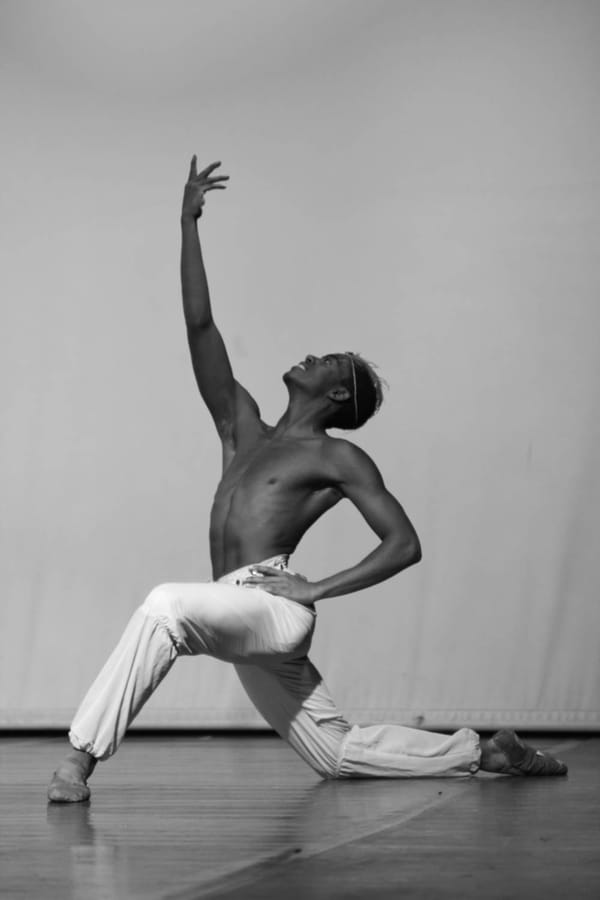Breaking the walls of the 'pre-invented world'
art is a way of speaking up

In an interview with The Paris Review Joan Didion describes the act of writing as "hostile", explaining further: "you’re trying to make somebody see something the way you see it...wrench around someone else’s mind". The same can be said of any form of art. Truly meaningful art can confront the viewer with things they don’t want to hear, ideas they didn’t know even existed – it can be a painful process. As Didion puts it: "you want to tell somebody your dream, your nightmare. Well nobody wants to hear it, nobody wants to walk around with it." Art has a long and rich history with protest. From Picasso's Guernica, to the work of Guerilla Girls protesting the sexism of the art world, artists have used their work to shed light on the injustice of the world around them.
In the 1980s, the AIDS crisis descended on the gay communities of the liberal coastal cities of America – New York, San Francisco, and Los Angeles – without warning. These were the cities where young gay men had moved to finally live in relative safety from the violent homophobia of more rural areas. Before HIV, these communities were places where young people found connections that they had been denied growing up. Seemingly overnight, young people, who were already stigmatised and isolated from wider society, lost friends, exes, lovers. Whole communities were dying of rare cancers. In H is for Hawk, Helen MacDonald describes the act of losing loved ones as life becoming "a thing made of holes. Absences. Losses. Things that were there and are no longer". Life in the communities affected by AIDS must’ve seemed an ever widening chasm, a gaping wound of loss after loss that threatened to swallow them whole as well.
At first politicians refused to acknowledge the epidemic; then, they talked openly of tattooing patients with their positive status, of confining HIV-positive individuals to camps; the governor of Texas went as far as saying "if you want to stop AIDS, shoot the queers". A generation was being wiped out whilst their government took no action to stem the deaths. In anger, in desperation, gay artists did the only thing they could do: they made art. The ACT UP movement likened the AIDS crisis with the Holocaust, reclaiming the pink triangles Nazis used to publicly label homosexuals. In One Day This Kid David Wojnarowicz surrounded a photograph of himself as a gap toothed smiling boy with a prophecy of his future: "One day this kid will do something that causes men...to call for his death...he will be subject to loss home, civil rights, jobs, and all conceivable freedoms. All this will happen when in one or two years he discovers he wishes to place his naked body on the naked body of another boy". Wojnarowicz’s writing is lyrical, visceral, and clearly deeply personal. Yet that boy, the young David, could be a figure from a Norman Rockwell painting, an all-American boy, no different from any of the sons of the politicians who were overseeing a kind of genocide; Wojnarowicz’s work, for all it’s confessional qualities, is universal.
When David Wojnarowicz himself died of AIDS, his funeral was a protest march,which eventually culminated in his ashes being scattered on the White House lawn along with the ashes of other victims of AIDS. It was a heart-wrenching, desperate way of holding the government accountable for its neglect; forcing those who had the power to alleviate suffering, and chose to do nothing, to reckon with the blood on their hands. "To make the private into something public is an action that has terrific repercussions on the pre-invented world" is the philosophy by which Wojnarowicz created his work. In her astonishingly beautiful book The Lonely City, Olivia Laing, terms the 'pre-invented world' as the "existence of mainstream experience, which seems benign... its' walls almost invisible until you’re crushed against them".
Much of oppression, of injustice, is about erasure: the refusal to see injustice or inequality, denying a voice to those who are marginalised. In the face of this, ‘to make the private public’ is a powerful act. Carry That Weight is perhaps the most recent iteration of the statement in the art world. In this feat of endurance performance art, Emma Sulkowicz, a Columbia University visual arts student, carried a mattress resembling the one she had been raped on wherever she went for months, vowing she would do so until her rapist left the university. It was an extraordinarily brave act in a culture in which women who come forward with stories of their assault are immediately shamed, or accused of lying to destroy a man’s reputation. Through the mattress, Sulkowicz made the painful emotional weight of her assault tangible, made it impossible for the people around her not to address her struggles, her demands.
In a world of rising injustice it’s easy to think: what good can some splotches on a canvas do? What good are words in a play, or a story?
Building a more liberal world is more than changing laws. It's about changing perceptions. This can only be done by refusing to be silenced; art is a way of speaking up, in Didion’s words, it is a way of "tricking [the viewer] into listening to the dream".








